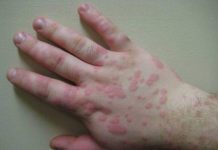Unlike other tropical vector borne diseases (where virus is transmitted by mosquitoes) such as malaria or yellow fever, which were seen as dangerous killer diseases in the 19 century or even earlier, dengue is disease whose incidence has increased dramatically in the past 50 years or since the World War II.
Dengue fever symptoms are important to know about and recognize since this is a disease that has no vaccine, and is one that causes up to 100 million infections each year all over the world.
Dengue epidemics are a more recent phenomenon and the virus is endemic in as many as 110 countries. The dengue virus is peculiar in that it can sometimes be asymptomatic or in some cases dengue fever symptoms could be limited to a mild fever.Also there is a period of incubation for the virus, which can extend from 3 to 14 days.
This means that the people who have traveled to a place where the disease is endemic may not display any dengue fever symptoms until after they have returned home.
Citizens of the United States most often display dengue fever symptoms having traveled to places such as the Caribbean, Asia and South America; however in rare cases even those who have not traveled out of the country have shown symptoms.
And if the symptoms start more than 14 days after return, they are unlikely to be dengue fever symptoms, the most commonly seen ones being –
The Dengue Triad
The most characteristic dengue fever symptoms are the dengue triad, which is fever, rash and headache. The symptoms may start with chills and fever. Other kinds of body ache may be present and joint and muscle pain. Pain upon movement of the eyes, and low backache are also commonly seen in dengue. Joint and leg pain may occur fairly early in the illness.
The temperature could shoot up to a high 40 degrees C (104 F) and may rise quickly. There is a pale pink rash on the face or other parts of the body, which is a characteristic dengue fever symptom and there could also be reddening of the eyes.
Other dengue fever symptoms
Most often it is the complications that follow rather than the actual infection that could make dengue life threatening. Low blood pressure and low heart rate are some of the more serious dengue fever symptoms. Sometimes the lymph nodes or glands in the groin and neck also become swollen.
Serious dengue fever symptoms or complications arising from dengue
Dengue can sometimes affect other body systems and in very serious cases, the virus could even affect the brain, giving rise to uncommon dengue fever symptoms such as a decreased level of consciousness and complications of the liver, even causing acute liver failure.
There could also be other very serious complications that can result from dengue – neurological disorders such as transverse myelitis and Guillain-Barré syndrome (a disorder affecting the peripheral nervous system and causing ascending/progressive paralysis). In some rare and serious cases the virus could also infect the heart and result in death.












